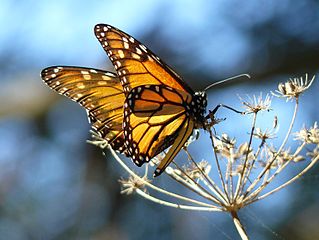
You know what they say, the stirrings of a butterfly's wings might cause a hurricane. However, butterflies’ wings have been stirring a lot less lately.
Monarch butterflies are orange, black, and white colored insects that eat milkweed – a common plant that grows between fields of crops. But the population of this beautiful creature has seen nearly an 80 percent decrease in the past two decades.
What sparked this astonishing decline? Farmers throughout North America used to let milkweed plants grow between fields of crops because monarchs – and their poisonous wings – serve as a natural pesticide and are attracted to them. But lately, farmers have been using herbicides to kill weeds including milkweed, therefore decreasing the monarchs’ biggest food source. Many are consequently dying from starvation.
Compounding their problems, monarchs are also facing recent bouts of bad weather. A single storm in 2002 killed off 500 million monarchs. This figure is around eight times the amount of monarchs alive in North America now. Other problems confronting today’s monarchs include disease, predators, and pesticides.
Monarchs are wonderful creatures, and humans have the opportunity to help them. Many groups of people are already working toward a solution, even President Obama. A big part of the solution is obvious: plant milkweed. It's a small thing perhaps, but it is certainly needed. One million acres of milkweed would have to be planted annually just to keep up with the recent losses. In addition to helping by planting milkweed, nectar plants are also a good food source for monarchs migrating in the spring and fall.
The monarch population just might be received if humans can address the issue at hand and work hard to fix them.
[Source:
National Wildlife
]

